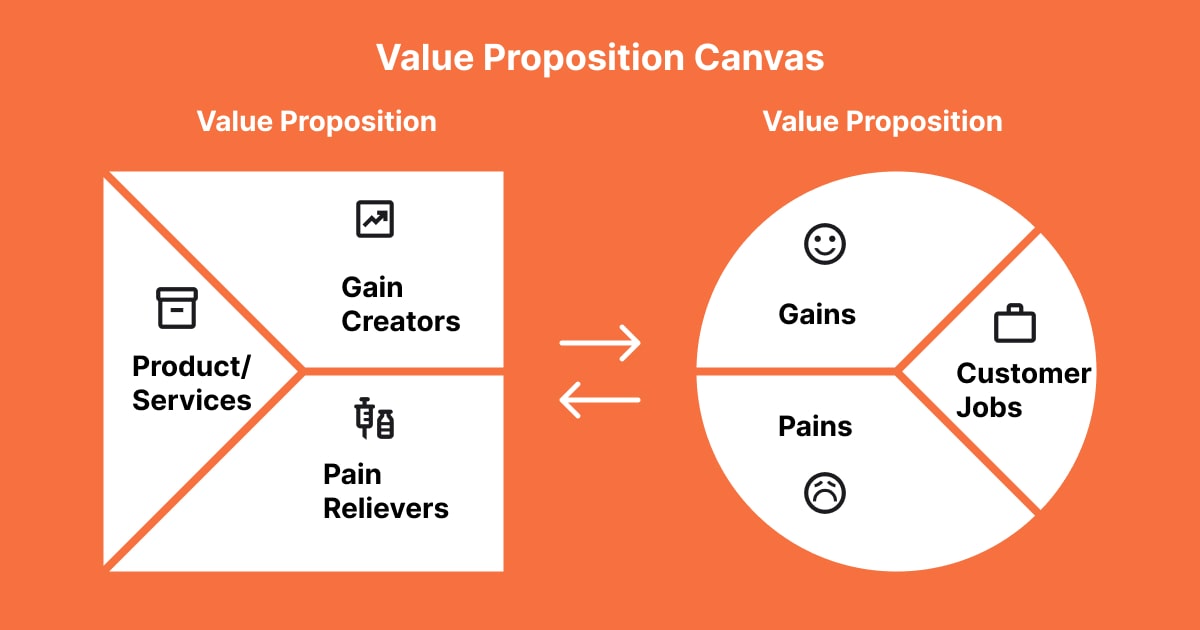
What is Value Proposition Canvas?
When a startup idea strikes you, you get all kinds of visions, doing that, doing this, and making billions. But after one or two days or even after hours, things seem blurry; the vision you had before is now not clear, and your adrenalin seems low.
Now, if you try to remember the ideas and different visions you had, they don’t fit any more. And this is reality; now you think of issues you might fall into, why some parts of the idea don’t work, or even why no one else ever did this. If you are at this moment, try building a value proposition canvas.
Developed by Dr. Alexander Osterwalder, the Value Proposition Canvas is a framework that can help you confirm that there is a strong relationship between your product and its users. Also, it gives you a clear picture of the user and helps you clearly understand the need of the user, thereby improving your chance of building a product that has a good product-market fit.
Value Proposition Canvas consist of 2 parts:
- Customer Profile
- Value Map
Value Proposition Canvas Free Online Template
Foundout provides a free online editor for building your Value Proposition Canvas. Try it at Value Proposition Canvas on Foundout
Customer Profile
In this part, you only look from the customer side.
1. Jobs (Jobs to be done)
Key Question: What is the customer trying to accomplish? What problem are they solving, or what goal are they trying to achieve?
These are things your customer wants to do. Considering Uber as an example, it is “booking a cab”. I want you to know that it is not always the same as a need (watch the below video).
2. Pains
Key Question: What frustrates or hinders the customer when trying to get the job done? What are they trying to avoid?
These are issues that customers try to avoid, like being unable to find a cab offline, misbehaviour from a driver, or paying too more than normal charge.
3. Gains
Key Question: What do customers want to achieve or gain? What positive results would delight them?
These are the positive outcomes they would expect, desire, or would be delighted to get. In the case of Uber, it would be: they can book cabs easily and quickly. They can predict arrival time, cashless payment, know the behaviour of the drive from rating, etc.
Note: Pains and gains may or may not complement each other.
Value Map
This should be made from the founder’s view.
2. Pain Relievers
Key Question: How do your products and services alleviate the frustrations and obstacles your customer faces?
This is how your product reduces or resolves pains your customers are facing. For example, reduce waiting times, fixed or standard charges, etc.
3. Gain Creators
Key Question: How do your products and services provide positive outcomes or benefits that delight your customers?
These are the benefits that your product will provide to your customers.
1. Products & Features
Key Question: What are you offering to help your customer achieve their desired outcome or solve their problems?
Here you should include products and features you provide. i.e., an online taxi booking platform.
That’s it; you created a value proposition canvas.
Let’s clear some doubts!!
Like most of you, I was also facing issues understanding the concepts, like almost all of them are same, what to write where (although the key question provides you some guidance).
What’s the difference between Gain & Gain Creators? The difference between Gains and Gain Creators lies in their perspective within the Value Proposition Canvas. Gains represent what customers want, expect, or desire. Gain Creators describe how your product or service delivers those desired gains
Similarly, with pain and pain relievers.
This is just a version 0.0 of your value proposition canvas, and these are filled with your assumptions and knowledge, which might be correct or wrong. But now we have something on which we can validate, correct, and build our startup.
